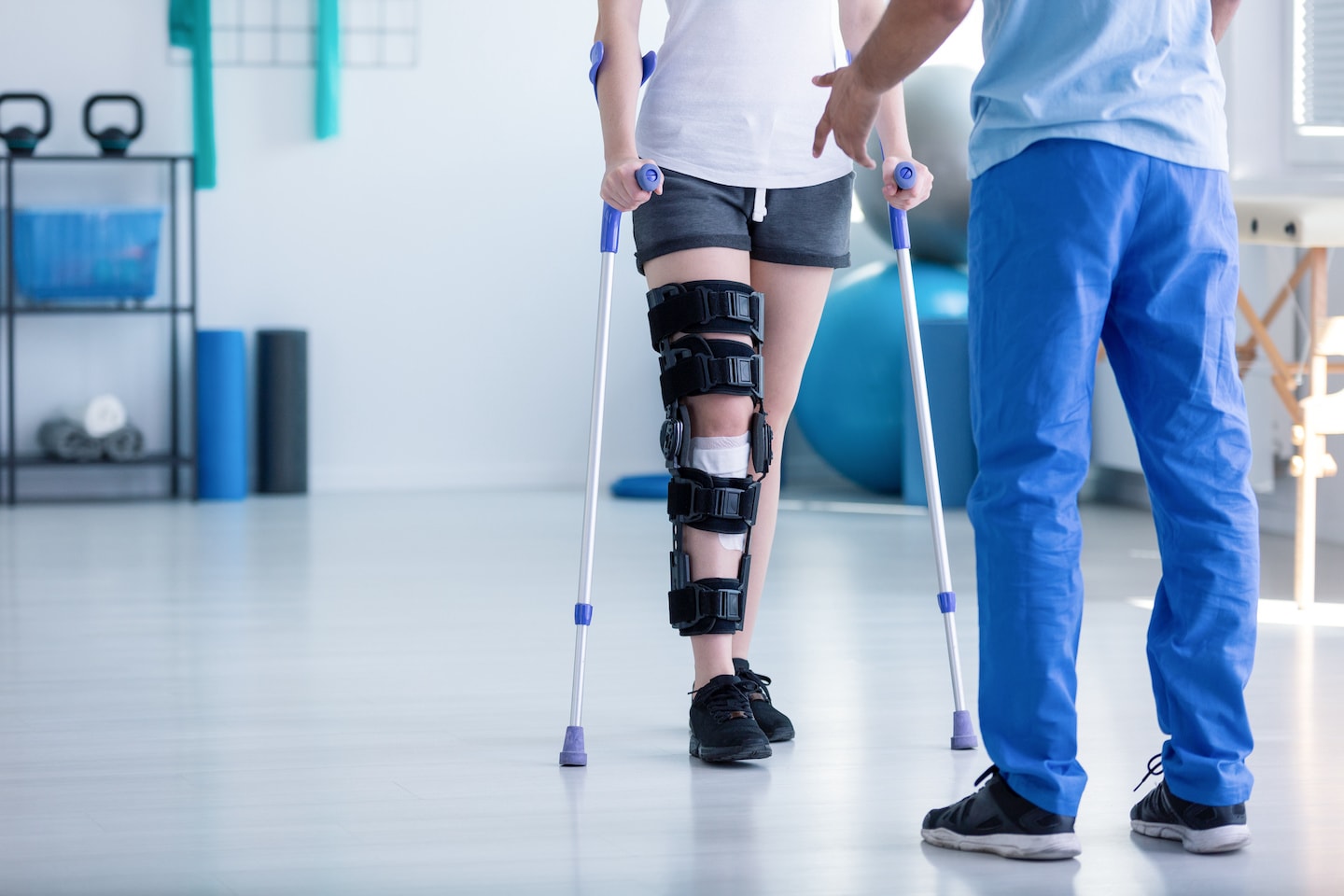Embarking on rehabilitation after knee arthroplasty brings many questions about the recovery ahead. Plancher Orthopaedics addresses what you can anticipate during your journey, from immediate post-op recovery to regaining full function. We aim to provide a clear “rehabilitation timeline after knee arthroplasty: what to expect” and set practical expectations for each key step, empowering you with the information needed for a successful rehabilitation.
Key Takeaways
- Early mobilization, effective pain management, and safety preparations at home are crucial for a successful knee arthroplasty recovery, starting immediately after surgery.
- Gradual increase in mobility and strength training exercises are vital during early rehabilitation, with ongoing guidance from healthcare professionals to ensure proper technique and avoid complications.
- Long-term wellness after knee replacement involves adopting a maintenance exercise program, managing weight, and engaging in low-impact activities to preserve joint health and ensure the longevity of the knee replacement.
Navigating the Early Days Post-Knee Arthroplasty
The first few days following knee replacement surgery are crucial for setting the stage for a successful recovery. This period involves continuous monitoring of vital signs to ensure stability and effective pain management to support the healing process. It’s normal to experience knee pain and discomfort, but managing these effectively is key to a smoother recovery.
Early mobilization is essential to prevent complications such as blood clots and stiffness. Physical therapy often begins as early as the first day after surgery, focusing on exercises to improve range of motion, including full knee extension and knee flexion. This proactive approach can significantly impact your recovery timeline and overall knee function.
In these initial days, setting up for success at home and beginning the first steps of mobilization and pain relief are critical. Let’s dive deeper into these aspects to ensure you start on the right foot.
Setting Up for Success at Home
Preparing your home environment ahead of your knee replacement surgery can make all the difference in your recovery journey. Removing trip hazards, securing rugs, and installing handrails are simple yet effective measures to ensure safety and accessibility. These modifications reduce the risk of falls and make moving around your home less daunting.
Post-surgery, here are some tips to make your recovery at home more comfortable and successful:
- Use firm chairs with straight backs and armrests for support while sitting and standing.
- Consider elevating toilet seats for added safety in the bathroom.
- Use assistive devices like walkers or crutches to avoid excessive bending and straining.
- Use adaptive tools like a reacher or long-handled shoehorn to avoid excessive bending and straining.
- Make small adjustments to your daily activities to minimize strain and promote healing.
These tips can significantly contribute to a more comfortable and successful recovery at home.
The First Steps: Mobilization and Pain Relief
Mobilization starts almost immediately after knee replacement surgery. Patients are encouraged to start moving less than three hours post-operation to promote early mobility. This involves walking with the assistance of mobility aids and guidance from physical therapists and nurses. Early movement helps improve circulation, reduces the risk of blood clots, and initiates the process of restoring knee function.
Pain management, especially for severe pain, is another critical component in these early stages. Some strategies to manage pain effectively and prevent stiffness include:
- Using prescription pain medication, such as hydromorphone or oxycodone, alongside over-the-counter options like NSAIDs and acetaminophen
- Elevating the leg and applying ice packs to reduce swelling and discomfort
- Weaning off narcotic analgesics within two to three weeks
These strategies help set the foundation for a smoother rehabilitation process, ensuring efficient replacement recovery.
Building Momentum in Early Rehabilitation
As you transition from the immediate postoperative period to early rehabilitation, the focus shifts to increasing mobility and rebuilding knee strength. The criteria for discharge include achieving a stable gait with crutches, managing pain to acceptable levels, and ensuring stable postoperative bleeding. These milestones mark the beginning of a more structured rehabilitation process.
It’s important to avoid staying in the same position for too long. Tools like reachers or long-handled sponges assist in dressing and bathing without unnecessary strain. Assistive devices such as walkers, crutches, or canes are recommended until your healthcare team advises otherwise. Early rehabilitation exercises, such as straight leg raises and knee flexion/extension, are crucial during this phase and should be performed regularly for at least two months.
Now, let’s delve into the specifics of gradually increasing mobility and essential exercises for knee strength.
Gradual Increase in Mobility
Immediately following knee replacement surgery, patients start mobilizing with the help of gait aids like a Zimmer frame, cane, or rollator walker, under the guidance of physical therapists and nurses. By two to three weeks post-surgery, many people can stop using walkers or other mobility aids. The transition to using a cane should be done carefully, holding it in the hand opposite the new knee for optimal support.
A gradual increase in walking distance is encouraged during the rehabilitation process. As strength and balance improve, you’ll find yourself relying less on assistive devices and more on your capabilities. This progressive approach helps build confidence and improves overall knee function.
Essential Exercises for Knee Strength
Following knee replacement surgery, a rehabilitation program with specific knee replacement recovery exercises designed to improve knee strength and function is essential. Key exercises include:
- Straight leg raises
- Ankle pumps
- Knee straightening exercises
- Bed-supported knee bends
- Seated knee bends
- Wall slides
These exercises help enhance muscle strength and joint range of motion.
Performing these exercises while lying flat on your back and keeping the knee straight is crucial to ensuring proper form and preventing injury. These prescribed exercises play a significant role in your recovery, aiding in the restoration of knee function and strength.
Advancing Through Intermediate Rehabilitation
The intermediate rehabilitation phase marks an increase in the intensity of physical therapy and exercises, guided by a physical therapist. The main objectives during this phase are to maintain the range of knee movement, build strength in the knee joint, and enhance joint control. This phase typically involves performing exercises for 20 to 30 minutes, two to three times daily, supplemented by walking sessions of similar duration.
Using resistance bands in exercises targets specific muscles around the knee, enabling strength-building without high-impact movements. Properly guided strength training helps fortify the muscles around the new joint, alleviating stress on the knee implant. This phase also involves gradually minimizing reliance on walking aids while engaging in exercises like seated knee flexion and standing hamstring curls.
Let’s explore the targeted exercises that enhance functionality and the strategies for continued pain management and swelling reduction.
Enhancing Functionality with Targeted Exercises
To enhance functionality, exercises that mimic daily activities are crucial. Seated knee flexion and standing hamstring curls are particularly beneficial for restoring knee function after knee replacement. These exercises help strengthen thigh muscles, improve knee extension, and enhance knee bending capabilities.
Engaging in specific exercises that mimic daily activity movements is essential for regaining functional mobility. By incorporating these exercises into your routine, you can improve your ability to perform everyday tasks and move towards greater independence.
Strategies for Continued Pain Management and Swelling Reduction
Continued pain and swelling management is vital during the intermediate rehabilitation phase. Elevating the leg helps reduce swelling following knee replacement exercises. Ice wrapped in a towel should be applied in a sequence of 20 minutes on and 20 minutes off, repeated for about two hours to relieve pain and swelling after exercise.
Managing pain and swelling effectively is essential for a successful rehabilitation after knee arthroplasty. These strategies not only help relieve pain but also facilitate the overall healing process, allowing for a smoother recovery journey.
Achieving Independence in Advanced Rehabilitation
The advanced rehabilitation phase focuses on gaining independence in daily activities and introducing low-impact activities. Recommended exercises during this phase include:
- Knee dangling
- Side leg lifts
- Prone knee extension and flexion
- Prone hip extension
These exercises promote knee strength and mobility. Functional training, with activities like step-ups and mini squats, helps patients regain independence in their daily routines.
Alongside exercises, outpatient physical therapy in this phase also prepares patients for low-impact activities and emphasizes ongoing pain management. These efforts are crucial for achieving a successful recovery and transitioning toward full independence.
Mimicking Daily Activities for Functional Improvement
In the advanced recovery stages, engaging in exercises that simulate daily tasks is essential for enhancing functional movement and independence. Some standing knee exercises that are particularly beneficial include:
- Raising onto the balls of your feet
- Bending the knees slightly
- Lifting the leg out to the side
- Bending the knee to bring the heel toward the buttocks
These exercises can help improve strength and flexibility in the knees and promote overall mobility.
Simulating wall slides can improve knee function, mimicking the motion of sitting down and standing up, which is crucial for daily activity functionality. These exercises help you regain the ability to perform everyday activities with ease.
Stepping Towards Full Recovery
Exercises like calf stretches and knee step-ups are integral for transitioning to full recovery and gaining independence. Incorporating resistance band exercises during rehabilitation can specifically target and strengthen the muscles surrounding the knee, contributing to overall knee recovery.
Step-ups and mini squats are incorporated into later stages of rehabilitation to facilitate the transition towards living more independently and without the use of walking aids. These exercises help build the strength and confidence needed for a full recovery.
Embracing an Active Lifestyle in Late Rehabilitation
The late rehabilitation phase involves a gradual return to more strenuous activities and maintaining knee health through regular exercise. Developing a regular exercise routine is essential for the ongoing health of the knee after replacement. Patients are advised to continually monitor and adjust their exercise routines to ensure long-term mobility and joint strength.
During this phase, the focus is on regaining strength, endurance, and flexibility. Exercises such as lunges and wall slides are integral to this phase, aiding the transition back to more rigorous activities.
Now, let’s delve into safely returning to rigorous activities and sustaining knee health with regular exercise.
Returning to Rigorous Activities Safely
As you progress in your knee replacement recovery, it’s important to approach rigorous activities with caution. Patients must be cautious with knee movement and avoid strenuous activities for several months after knee replacement surgery. Understanding the knee replacement recovery timeline can help set realistic expectations. At the 12-week stage of recovery, patients should continue to avoid high-impact activities that could harm the implants or surrounding tissues.
Opting for lower-impact activities such as hiking, swimming, or playing tennis is recommended for maintaining knee health post-recovery. Staying active within safe limits is crucial for sustained long-term wellness after knee replacement, ensuring you avoid overexertion from high-impact activities too soon.
Sustaining Knee Health with Regular Exercise
Maintaining knee health with regular exercise is essential for a full recovery from knee arthroplasty. Incorporating both strength and mobility training into your routine is critical. Low-impact activities like golfing, bicycling, and swimming help in maintaining the longevity of the knee replacement.
Adding stationary biking or using an elliptical trainer can supplement walking for knee strength and flexibility. An active lifestyle is key to the long-term health and functionality of your knee replacement, ensuring that your new knee remains strong and functional.
Maintaining Long-Term Wellness After Knee Replacement
Long-term wellness for knee replacement patients involves making healthy lifestyle choices, attending regular check-ups, and taking steps to protect the knee joint. Routine follow-up appointments are crucial for monitoring rehabilitation progress and ensuring the longevity of your total knee replacement. Total knee replacement surgery has a high success rate, with 90–95% of knee replacements lasting at least 10 years and approximately 80% still in place after 15 years.
Transitioning to a maintenance program that includes balance exercises and advanced strength training helps in returning to most normal activities and participating in low-impact sports. Healthy lifestyle choices, including diet and weight management, along with adherence to a tailored physical activity program, support long-term wellness and functionality of the knee replacement.
Healthy Habits for Knee Preservation
Preserving knee health after knee surgery requires a combination of weight management, routine physical activity, and a maintenance exercise program. Managing weight is crucial to decreasing additional stress on the joint. Keeping a routine of physical activity helps prevent complications and supports the health of the knee.
Patients are encouraged to partake in a maintenance exercise program after full healing for sustained knee joint health. Engaging in activities like dancing and golf, with modifications to prevent twisting movements, helps maintain balance and overall knee functionality.
Protecting Your Knee Joint for the Future
Protecting your knee joint for the future involves avoiding high-impact activities and taking preventive measures as advised by your healthcare provider. Low-impact exercises are preferred over high-impact ones to reduce stress on new knee joints. Patients should avoid activities like running and jumping to preserve the integrity of the knee replacement.
Some patients may be advised to take antibiotics before dental procedures to prevent infections in the artificial joint, which is crucial for protecting the knee joint in the long run. These preventive measures ensure that your knee replacement remains functional and healthy for years to come.
Summary
Navigating the rehabilitation timeline after knee arthroplasty involves multiple phases, each with specific goals and activities to ensure a successful recovery. From the early days post-surgery to achieving full independence and maintaining long-term wellness, each step is crucial for restoring knee function and strength. Key strategies include early mobilization, targeted exercises, proper pain management, and a structured rehabilitation program.
As you journey through recovery, staying committed to your prescribed exercises and adopting healthy lifestyle habits are essential for long-term knee health. Embrace the process with patience and determination, knowing that each phase brings you closer to a fully functional and pain-free life. May your path to recovery be smooth and rewarding, leading to a vibrant, active lifestyle. Contact Plancher Orthopaedics and see how we can help you navigate post-knee arthroplasty further.
Frequently Asked Questions
When can I start walking after knee replacement surgery?
You can start walking with the help of mobility aids and guidance from physical therapists and nurses less than three hours after knee replacement surgery. It’s important to mobilize early to aid in your recovery.
What are some important exercises to improve knee strength post-surgery?
To improve knee strength post-surgery, essential exercises include straight leg raises, ankle pumps, knee straightening exercises, bed-supported knee bends, seated knee bends, and wall slides. Incorporating these exercises into your rehabilitation plan can help promote recovery and regain strength in your knee.
How can I manage pain and swelling after knee replacement?
To manage pain and swelling after knee replacement, use prescription pain medications, and over-the-counter options, elevate the leg, and apply ice packs to reduce swelling. These measures can help alleviate discomfort and promote healing.
What long-term measures should I take to protect my knee replacement?
To protect your knee replacement in the long term, make sure to attend routine follow-up appointments, maintain a healthy weight, stay physically active, and consider taking antibiotics before dental procedures to prevent infections. These measures are essential for the longevity of your knee replacement.





 William D. Murrell, MD
William D. Murrell, MD Thomas B. Evely, DO
Thomas B. Evely, DO Clifford Voigt, MD
Clifford Voigt, MD Karthikeyan Chinnakkannu, MD
Karthikeyan Chinnakkannu, MD Max N. Seiter, MD
Max N. Seiter, MD Demetris Delos, MD
Demetris Delos, MD Lauren M. Fabian, MD
Lauren M. Fabian, MD